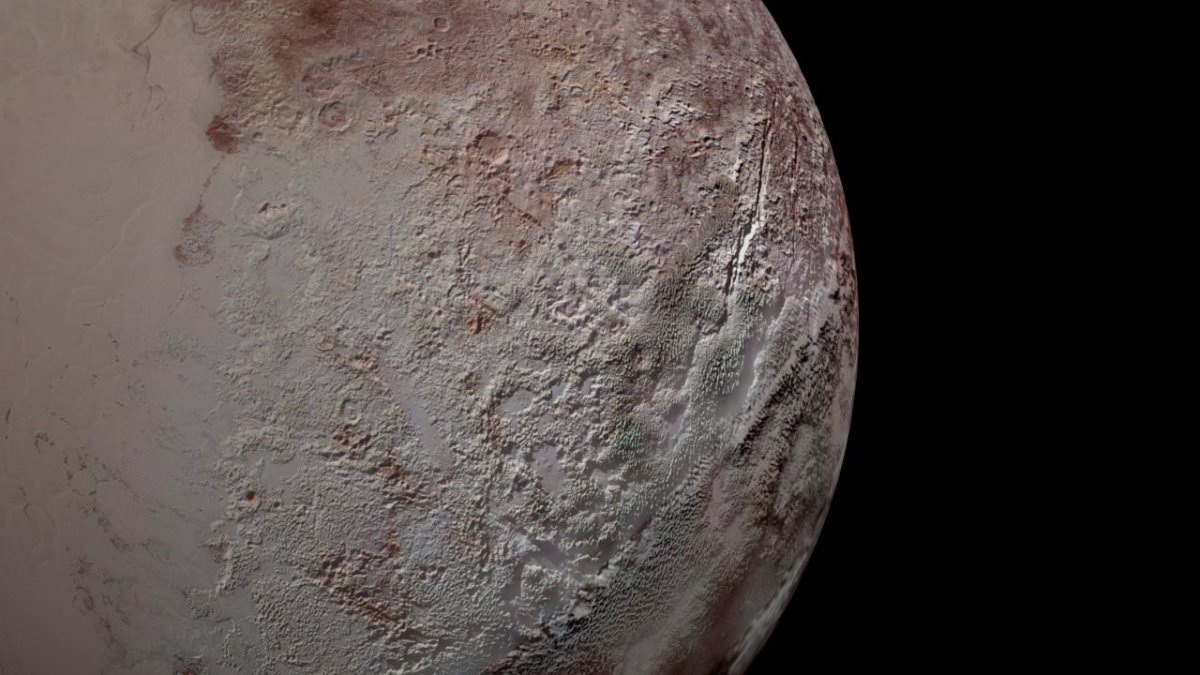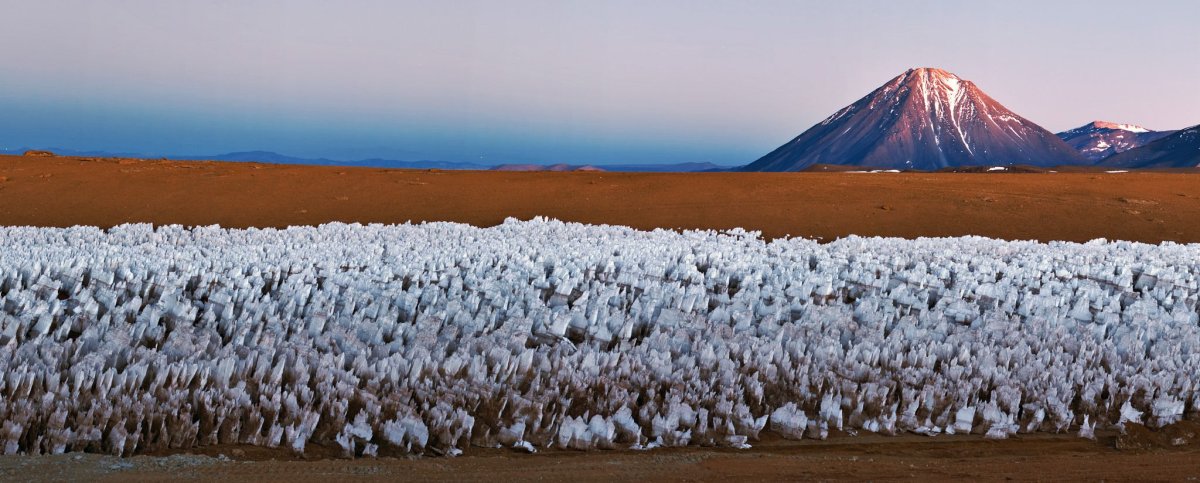Pluto's Bladed Terrain is just as welcoming as the name sounds. The landscape type, which is found only in the high elevation areas around the dwarf planet's equator, is covered in fields of giant spikes of ice as tall as the Eiffel Tower, with peaks spaced a couple of miles part.
It's not just a daunting scene, though. According to a new paper in the journal Icarus, these spikes mean that Pluto's landscape is active and influenced by climate. That's because they appear to be made of frozen methane, which is mostly likely to fall on higher elevations like those where these features are found. But that doesn't account for the spiky shape.

"When we realized that bladed terrain consists of tall deposits of methane ice, we asked ourselves why it forms all of these ridges, as opposed to just being big blobs of ice on the ground," Jeffrey Moore, a planetary scientist at NASA and lead author on the paper, said in a press release. "It turns out that Pluto undergoes climate variation, and sometimes, when Pluto is a little warmer, the methane ice begins to basically 'evaporate' away."
The team isn't sure yet precisely what's causing the methane to vaporize in such a peculiar pattern, but they turned to a similar structure on Earth for one possible explanation: penitentes.
These terrestrial ice spikes are also found only in high elevations—they're particularly common in Chile's Atacama Desert—and in the lab. On Earth, of course, they're made of water ice rather than methane, and they don't reach nearly the scale of Pluto's (they grow only to 20 feet at their highest).

Scientists think that penitentes on Earth form because although a field of snow looks flat and perfect to our eyes, there are tiny inconsistencies in the surface that can concentrate the sun's light. Those places then melt faster, becoming the dips between spikes. Miniature versions of these dips are more common and are called suncups. On Earth, the process requires fairly strong sunlight not impeded by clouds, which is why they are most prevalent in high, dry places like the Atacama.
The scientists behind the new research aren't sure yet whether Pluto's spikes form entirely through vaporization, as penitentes do on Earth, or if their tops also grow through freezing. But they do think that the features mean that in the past, the area was cold enough for methane to freeze. Then the climate warmed enough for the vaporization process to start—sunlight is much weaker, since Pluto is almost 40 times as far away from the sun as we are.
Intriguingly, on both Earth and Pluto, these spikes are found only near the equator and only in higher terrains, which suggests to scientists that the atmosphere and climate are probably an important factor in their formation. While we know a fair amount about Earth's climate and its history, we know much less about Pluto's. But clues like these gigantic ice spikes could change that.
Uncommon Knowledge
Newsweek is committed to challenging conventional wisdom and finding connections in the search for common ground.
Newsweek is committed to challenging conventional wisdom and finding connections in the search for common ground.
About the writer
Meghan Bartels is a science journalist based in New York City who covers the science happening on the surface of ... Read more
To read how Newsweek uses AI as a newsroom tool, Click here.








